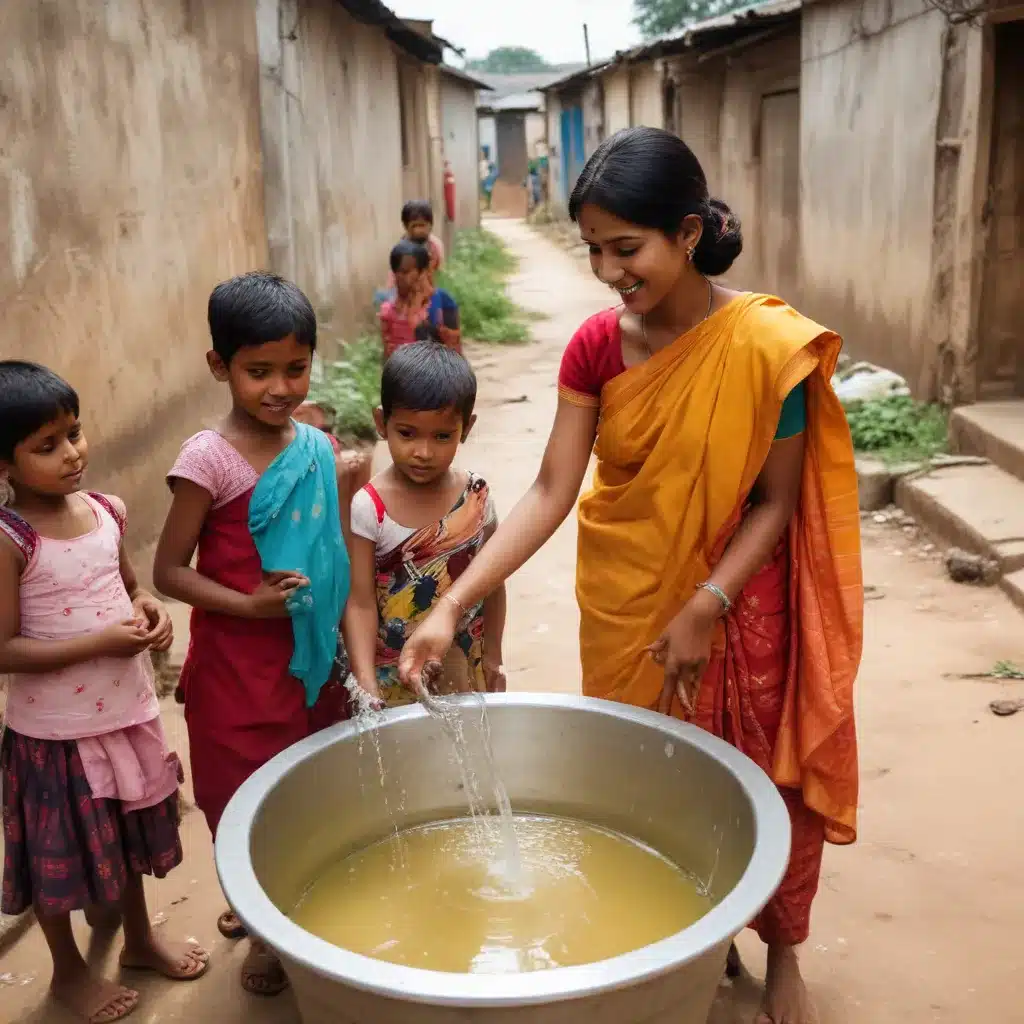
The Intersection of WASH and Nutrition for Child Wellbeing
Access to adequate water, sanitation, and hygiene (WASH) services is a fundamental human right and a critical determinant of public health, particularly for children living in informal settlements. Substandard WASH conditions contribute to the spread of infectious diseases, malnutrition, and poor developmental outcomes among children. Conversely, improved WASH access can enhance nutritional status and overall child wellbeing. In Hyderabad’s sprawling informal settlements, where vulnerable populations often lack basic services, integrating WASH and nutrition interventions is crucial for addressing the multifaceted health needs of children.
Navigating the Challenges of Informal Settlements
Hyderabad’s informal settlements, home to millions of marginalized residents, face complex challenges related to inadequate WASH infrastructure and services. Many households lack access to clean, reliable water sources, safe sanitation facilities, and effective waste management systems. These conditions foster the transmission of waterborne illnesses, such as diarrhea, which can lead to nutrient loss, growth faltering, and impaired cognitive development in children.
Furthermore, the socioeconomic and environmental vulnerabilities inherent in informal settlements can constrain families’ ability to afford and access nutritious foods, exacerbating the risk of malnutrition. Malnutrition, in turn, weakens the immune system and increases susceptibility to WASH-related infections, perpetuating a vicious cycle of poor health outcomes.
Integrating WASH and Nutrition Interventions
To break this cycle and promote holistic child wellbeing, a multisectoral approach that integrates WASH and nutrition interventions is essential. This integrated approach should leverage community-based partnerships, leverage existing resources, and empower residents to become active participants in their own health and development.
Community-Based Partnerships
Engaging with local community organizations, leaders, and residents is crucial for designing and implementing effective WASH and nutrition programs. These partnerships can help identify community-specific needs, mobilize resources, and foster ownership and sustainability of interventions. For example, collaborating with women’s self-help groups or youth organizations can facilitate the delivery of hygiene education, growth monitoring, and complementary feeding practices.
Leveraging Existing Resources
Within informal settlements, families often rely on a mix of formal and informal WASH and nutrition services. By mapping and leveraging these existing resources, including community-based water treatment systems, local food vendors, and community health workers, programs can build upon and strengthen the community’s resilience and self-reliance.
Empowering Residents
Empowering residents, particularly women and caregivers, is essential for ensuring the long-term impact of integrated WASH and nutrition interventions. This can involve training community members as hygiene champions, establishing community-based growth monitoring and promotion initiatives, and supporting women’s groups to advocate for improved services and policies.
Promising Practices in Hyderabad
In Hyderabad’s informal settlements, several promising initiatives have demonstrated the potential of integrated WASH and nutrition approaches to improve child health and wellbeing.
Community-Led Total Sanitation (CLTS)
The CLTS approach, which mobilizes communities to collectively identify and address the root causes of open defecation, has been implemented in several informal settlements. By fostering community ownership and behavior change, CLTS has led to the construction of affordable sanitation facilities and improved hygiene practices, contributing to reduced diarrheal diseases and improved nutritional status among children.
Integrated Nutrition and WASH (INAWASH) Program
The INAWASH program, implemented by a local NGO, combines nutrition education, growth monitoring, and WASH interventions to address the interlinked determinants of child undernutrition. This approach has demonstrated increased participation in growth monitoring, improved complementary feeding practices, and enhanced access to clean water and handwashing facilities, ultimately leading to reductions in stunting and wasting among children.
Community-Based Management of Acute Malnutrition (CMAM)
The CMAM approach, which empowers community members to identify and manage acute malnutrition, has been integrated with WASH interventions in Hyderabad’s informal settlements. By combining community-based screening, referral, and treatment of acute malnutrition with improved access to clean water, sanitation, and hygiene, this approach has shown promising results in improving the nutritional status and overall wellbeing of children.
Scaling Up and Sustaining Integrated Interventions
To scale up and sustain these integrated WASH and nutrition interventions, a multifaceted approach is required. This includes:
-
Policy and Governance Alignment: Ensuring that national and local policies recognize the synergies between WASH and nutrition, and support the implementation of integrated programs.
-
Capacity Building: Investing in the training and ongoing support of community health workers, local leaders, and other frontline actors to effectively deliver integrated services.
-
Innovative Financing: Exploring diverse funding sources, from public-private partnerships to community-based savings schemes, to ensure the long-term viability of integrated programs.
-
Monitoring and Evaluation: Developing robust monitoring and evaluation systems to track the impact of integrated interventions, inform decision-making, and drive continuous improvement.
-
Research and Knowledge Sharing: Conducting rigorous research to generate evidence on the effectiveness and cost-benefits of integrated WASH and nutrition approaches, and disseminating these insights to policymakers and practitioners.
By addressing the multifaceted needs of children in Hyderabad’s informal settlements through integrated WASH and nutrition interventions, we can unlock the potential for holistic child wellbeing, breaking the cycle of poor health and unlocking a brighter future for the next generation.
Conclusion
The integration of WASH and nutrition interventions holds immense promise for improving child health and wellbeing in Hyderabad’s informal settlements. By leveraging community-based partnerships, leveraging existing resources, and empowering residents, these integrated approaches can address the complex, interlinked determinants of child undernutrition and poor WASH conditions. The successful implementation of initiatives like CLTS, INAWASH, and CMAM demonstrate the feasibility and impact of this integrated approach. To scale up and sustain these efforts, a multifaceted strategy that aligns with policy, builds local capacity, secures innovative financing, and generates robust evidence is crucial. By pursuing this holistic path, we can create a future where every child in Hyderabad’s informal settlements thrives, with access to the essential services and resources they need to reach their full potential.

